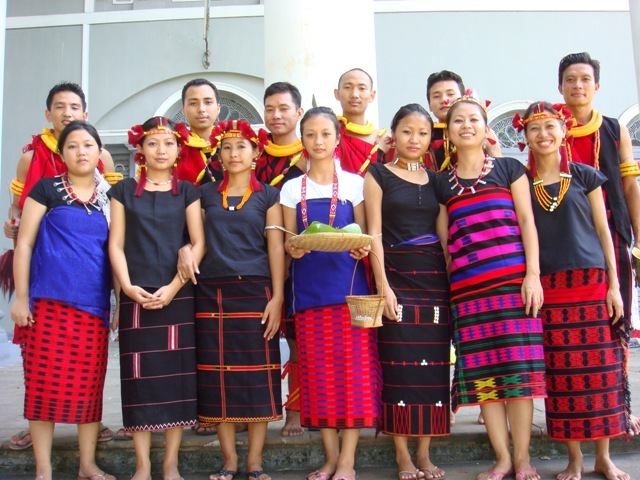
After a decade of precarious peace, Nagaland, India’s once troubled north-eastern state, now rivals and even outperforms India’s richest states on a number of development outcomes, according to an IndiaSpend analysis of 10 states on 20 socio-economic and health indicators.
However, poor infrastructure and a fragile peace continue to be problem areas as the state–formed on December 1, 1963–heads to the polls on February 27, 2018.
Perched on India’s eastern edge bordering Myanmar, Nagaland is roughly the size of Kuwait and has 2 million people, the same as the central Indian city of Indore. There are 16 major tribes and 20 sub-tribes, each marked by distinct clothing and jewellery; 87.93% of its population is Christian. English may be the official language, but over 30 languages and dialects are spoken.
With a per capita income of Rs 78,367, Nagaland ranks 22nd in India, below the national average of Rs 86,454, though ahead of low-income states such as Chhattisgarh (Rs 78,001) and Rajasthan (Rs 75,201). It is also ahead of other north-eastern states such ase Meghalaya (Rs 64,638) and Assam (Rs 52,895), according to the India Economic Survey 2016-17.
For the first time since Nagaland attained statehood in 1963, the Bharatiya Janata Party (BJP), which heads the ruling alliance at the Centre, is seeking to expand its presence in the state and in the rest of the north-east. Along with the Naga People’s Front (NPF), the BJP has been a part of the ruling coalition here, the Democratic Alliance of Nagaland.
However, earlier this month, the BJP broke away from the incumbent NPF government over seat-sharing issues. It has now instead joined forces with the Nationalist Democratic Progressive Party, which includes many former leaders of the NPF, agreeing to a 20:40 seat-sharing arrangement.
In his poll campaign, apart from offering senior citizens state-sponsored pilgrimage to Jerusalem, Prime Minister Narendra Modi has promised that the BJP would “transform Nagaland” and bring in a “stable, inclusive and corruption-free government” if voted to power.
Most women in Nagaland (97.4%) have a say in household decisions. The state performs best in this regard, ahead of best-performers Kerala (92.1%) and Goa (93.8%). The state also reported the lowest percentage of ever-married women who experienced spousal violence (12.7%), less than half the national average.
They are also among the least likely to be married before 18. As of 2015-16, less than a sixth or 13.3% of women in the state had early marriages–only Kerala (7.6%) and Goa (9.8%) fared better, our analysis shows.
Women who marry later and are educated more, are healthier mothers with healthier children as they better prepare for childbirth and motherhood, and are more open to accessing healthcare facilities and understanding the implications of their health on their children, IndiaSpend reported on July 21, 2017.
Despite poor access to water, good sanitation
About 20% households in Nagaland still do not have access to better sources of drinking water–only 80.6% do–the second lowest after Meghalaya (67.9%) and more than nine percentage points below the national average of 89.8%. Yet, the state manages to do well on sanitation, an IndiaSpend analysis of the data show. Only 1.7% people in Nagaland defecate openly or do not use any sanitation facility, thereby allowing the state to report lowest defecation rate after Kerala (0.8%).
However, issues with infrastructure advancement impinge on the state’s progress on this development indicator as about 25% of the population are still unable to access improved sanitation facilities, NFHS data show.